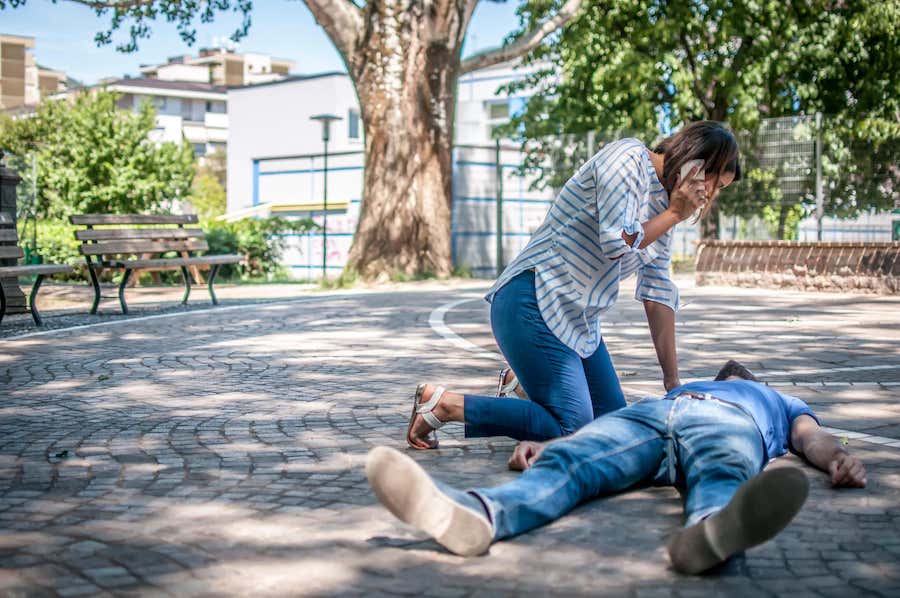Would you know how to perform life-saving CPR?
Charity says more than 4 in 10 don’t have this vital skill and not enough of us are confident and ready to use this skill.
More than four in 10 UK adults do not know how to perform CPR, the British Heart Foundation (BHF) has said.
CPR – cardiopulmonary resuscitation – can help save somebody’s life in a medical emergency. However, 43% of people have never learned how to do it, according to a poll on behalf of the charity, which surveyed 2002 people over the age of 16.
The poll also revealed generational differences, with Gen Z (those aged 12-26) being more likely to be trained in CPR than older age groups. Some 67% of Gen Z had learned CPR, compared with 52% of Gen X respondents (aged 43-58).
More than 30,000 cardiac arrests occur every year across the UK outside of a hospital setting, according to the BHF – so knowing how to perform this life-changing skill could be vital.

“Every moment matters when someone has a cardiac arrest, and being able to step in and perform CPR could be the difference between life and death,” said Dr Charmaine Griffiths, chief executive of the British Heart Foundation. “A cardiac arrest can affect anyone, at any time, so we want as many people to learn CPR as possible.
“Not enough of us are confident and ready to use this skill. With our tool RevivR, all you need to learn how to save a life is a spare 15 minutes, a phone and a cushion. Give it a try during your next coffee or lunch break – it could help you save a life, a loved one.”
Need to brush up on your CPR training? Here’s what you should know.
When do you perform it?
CPR is the abbreviation for cardiopulmonary resuscitation. The goal is to keep someone’s oxygen pumping if their heart suddenly stops, known as cardiac arrest. This is different to a heart attack – and CPR should only be performed if somebody is unconscious and not breathing/or not breathing normally.
In the event of a cardiac arrest, if CPR isn’t performed quickly until further help and access to a defibrillator is available, the person could die very quickly.
How do you do it?
The BHF advises that you first check for a response. Shake their shoulders and ask loudly and clearly if they are doing OK. At this point, it’s also important to call the emergency services on 999. The operator will also be able to talk you through the next steps while waiting for an ambulance.

If the person is unconscious and not breathing, or not breathing normally, then start CPR. If other people are around, one of them could also try to locate the nearest defibrillator.
To do chest compressions, if they’re wearing a thick coat, undo that first – however thin clothing doesn’t need to be removed. Place the heel of your hand in the centre of their chest, then you press down firmly, yet smoothly, at a rate of two compressions per second. The BHF suggests pushing to the beat of Stayin’ Alive by the Bee Gees. This can help you get the timing right.
People are often worried about whether they are pressing too hard when giving CPR, but the advice is usually that it’s better to press harder rather than softer, to ensure your compressions are beneficial – at least one-third of the chest depth (about 5-6cm/2-2.5ins – however, keep in mind the advice is different for giving CPR to children and babies).
How long should you do it for?
Ideally, CPR should continue until a defibrillator is available. If one is located nearby, these include clear instructions on how to use them.
Do you need to give rescue breaths?
The BHF says that hands-only CPR can be very effective and is now the recommended way of performing CPR, since the pandemic.
However, the NHS says that if you have been trained in CPR – including rescue breaths – and are confident in your skills, you should give chest compressions with rescue breaths.
If doing so, follow the same hand compression steps, but stop to give two breaths after every 30 compressions, according to NHS guidance.
To do this, tilt the person’s head back and lift their chin, then pinch their nose and put your mouth over theirs, then blow steadily and firmly for a second. You should be able to see their chest rise as doing so.
The Press Association
Latest posts by The Press Association (see all)
- A cardiologist on 5 things you’re doing that harm your heart - January 28, 2025
- Is your hair ageing you? 4 golden rules for youthful-looking locks at any age - January 28, 2025
- The biggest myths about prostate cancer – as it is named England’s most common cancer - January 28, 2025
- 5 ways reading benefits your brain health for over 65s - January 27, 2025
- 11 stunning gardens to explore as spring emerges - January 27, 2025




















